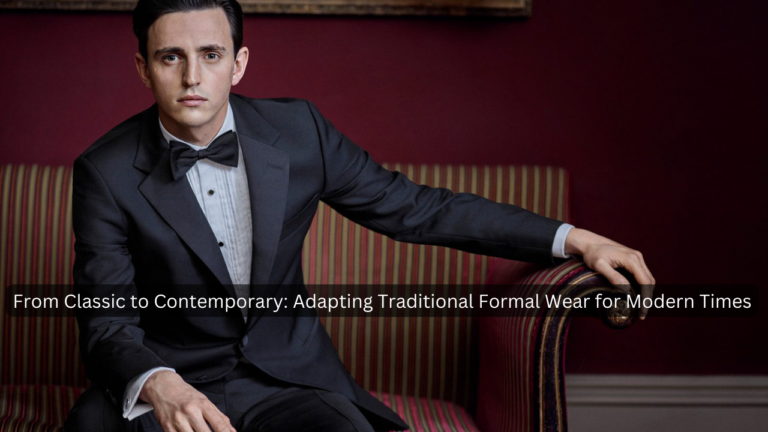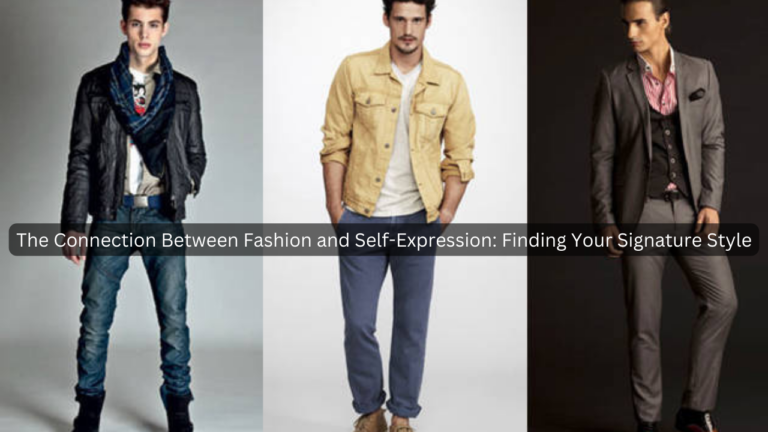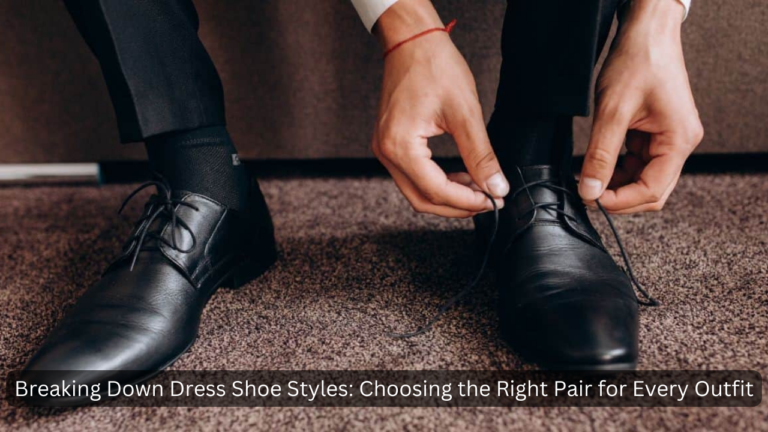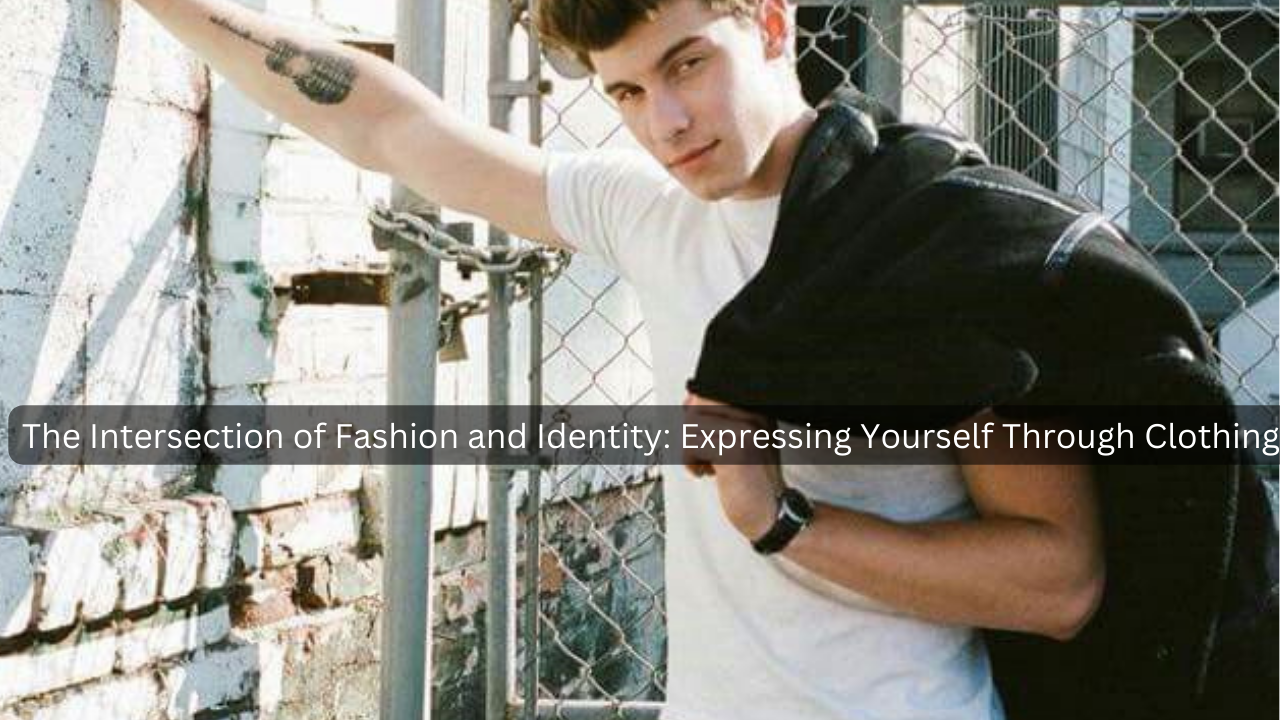
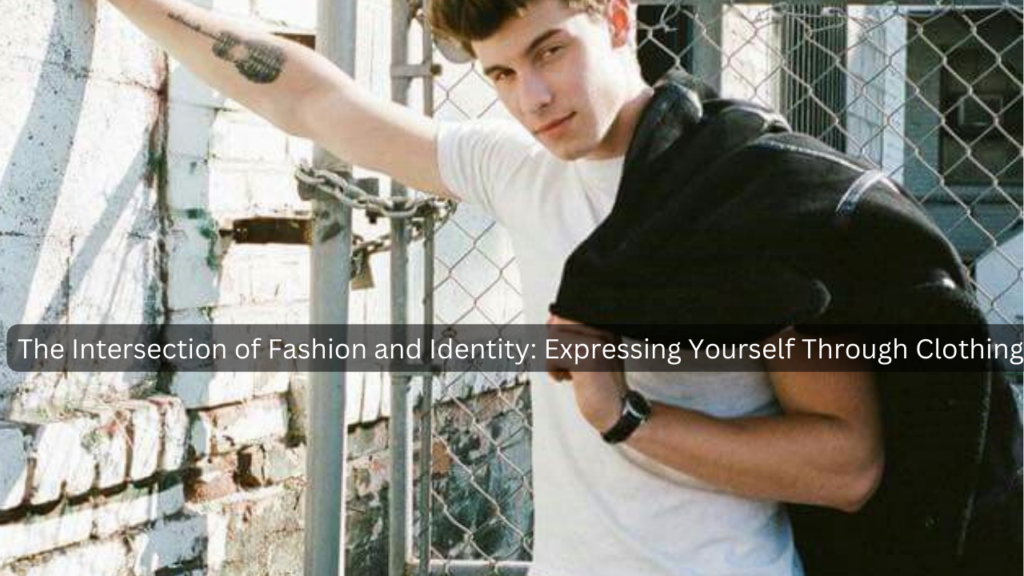
Table of Contents
Introduction
Fashion is more than just fabric and design—it’s a powerful form of self-expression that transcends trends and seasons. From the ancient civilizations to modern societies, clothing has served as a canvas upon which individuals paint their identities. This article explores how fashion intertwines with personal identity, shaping not only how we present ourselves to the world but also how we perceive ourselves.
Definition of Fashion as a Form of Self-Expression
Fashion is the art of assembling garments, accessories, and styles to convey a message about who we are or who we aspire to be. It goes beyond mere aesthetics, encompassing cultural, social, and personal dimensions. Whether through bold statements or subtle nuances, our clothing choices communicate facets of our personality, beliefs, and values to those around us.
Importance of Clothing in Shaping Personal Identity
Clothing acts as a visual language, speaking volumes about our cultural heritage, socioeconomic status, and individual preferences. The garments we select reflect our mood, aspirations, and even our affiliations with various subcultures or social groups. By consciously curating our wardrobes, we craft narratives that align with our evolving sense of self, empowering us to express and explore different facets of our identity.
Fashion as a Mirror of Identity
Fashion serves as a reflective surface that mirrors our identity, offering glimpses into our innermost thoughts and aspirations. Each outfit carefully selected and adorned becomes a visual autobiography, telling stories of our past, present, and aspirations for the future. It is through these sartorial choices that we announce our affiliations, celebrate our heritage, and assert our individuality in a world teeming with diversity.
Clothing Choices Reflect Cultural Background
Our clothing choices are deeply intertwined with our cultural roots, acting as a bridge that connects us to our heritage and traditions. Whether it’s the vibrant patterns of African wax prints, the intricate embroideries of South Asian saris, or the minimalist elegance of Japanese kimono, cultural attire not only preserves history but also communicates a sense of pride and belonging. These garments transcend fashion trends, embodying centuries-old narratives and rituals that bind communities together across generations.
How Personal Values are Communicated Through Style
Beyond aesthetics, our style speaks volumes about our personal values and convictions. Whether consciously or subconsciously, we use clothing to signal our beliefs, ethics, and principles to the world. For instance, eco-conscious individuals might opt for sustainable fashion brands that align with their commitment to environmental stewardship, while advocates for social justice may use their attire to raise awareness about causes close to their hearts. In this way, style becomes a medium through which we amplify our voices and champion the issues that define us.
Evolution of Fashion Trends
Fashion trends are a dynamic reflection of cultural, social, and historical shifts, constantly evolving to mirror the spirit of the times. From the opulence of the Renaissance to the rebellion of the Roaring Twenties and the minimalist chic of the 21st century, each era leaves its distinct imprint on the world of fashion.
Historical Context: How Fashion Trends Have Evolved
Throughout history, fashion trends have evolved in response to changing societal norms, technological advancements, and global events. Ancient civilizations adorned themselves with symbolic attire that signified status and cultural identity. In the Middle Ages, Europe witnessed the rise of sumptuary laws that regulated clothing based on social hierarchy, while the Renaissance era saw the emergence of elaborate garments that celebrated artistic innovation and individual wealth.
The Industrial Revolution marked a turning point as mass production democratized fashion, making stylish attire more accessible to the middle class. The 20th century witnessed rapid transformations in fashion, from the avant-garde experiments of the early 1900s to the influence of Hollywood glamour in the mid-century and the counter-cultural movements of the 1960s and 70s, which challenged traditional dress codes.
Influence of Societal Changes on Fashion Choices
Societal changes, such as shifting gender roles, political movements, and economic fluctuations, profoundly influence fashion choices. The rise of feminism in the 20th century, for example, sparked a revolution in women’s fashion, liberating women from restrictive corsets and introducing more practical and empowering attire. Similarly, global conflicts have historically influenced fashion, from the utilitarian uniforms of wartime to the post-war optimism that gave rise to new silhouettes and materials.
Today, fashion trends are shaped by digital culture, sustainability concerns, and the quest for individuality in a globalized world. Social media platforms amplify trends and blur geographical boundaries, while ethical considerations prompt consumers to seek out eco-friendly and socially responsible brands. As we navigate an increasingly interconnected world, fashion continues to evolve as a reflection of our collective aspirations and values.
Subcultures and Fashion
Subcultures have long been incubators of alternative identities and avant-garde fashion statements, challenging mainstream norms and cultivating distinctive styles that resonate with their members. From punk rock rebels to hip-hop pioneers, subcultures harness clothing as a form of cultural resistance, self-expression, and solidarity.
Exploration of Subcultures and Their Unique Fashion Statements
Subcultures emerge as communities united by shared interests, values, and aesthetics, each fostering its own sartorial language. For instance, the punk movement of the 1970s rebelled against the polished mainstream with DIY attire, featuring torn garments, safety pins, and bold anti-establishment slogans. This raw and confrontational style not only challenged societal conventions but also became a symbol of youthful rebellion and social critique.
Similarly, the hip-hop culture of the Bronx in the 1980s birthed a fashion revolution characterized by oversized streetwear, athletic brands turned urban staples, and extravagant jewelry. This style not only reflected the economic realities of marginalized communities but also celebrated resilience, creativity, and cultural pride.
Case Studies/Examples
Goth Subculture: Originating in the late 1970s, goth fashion embraces dark, romantic aesthetics with Victorian-inspired garments, black lace, and dramatic makeup. It reflects a fascination with morbidity and existential themes, serving as a visual expression of introspection and individualism.
Harajuku Fashion: Emerging from Tokyo’s Harajuku district, this subculture celebrates eclectic and often whimsical fashion combinations. Influenced by anime, streetwear, and global trends, Harajuku fashion thrives on creativity and personal expression, attracting attention worldwide for its bold colors and avant-garde silhouettes.
Vintage Enthusiasts: Beyond mainstream fashion, vintage enthusiasts embrace nostalgia Expressing Yourself Through Clothing from past decades. Whether it’s 1950s rockabilly, 1980s retro, or 1990s grunge, these subcultures revive and reinterpret vintage styles, infusing them with contemporary flair while honoring the cultural heritage and craftsmanship of bygone eras.
Subcultures continue to evolve and influence mainstream fashion, demonstrating the enduring power of Expressing Yourself Through Clothing to transcend mere utility and become a canvas for cultural commentary, creativity, and community identity.
Gender and Fashion
Fashion has traditionally been segmented into categories of masculinity and femininity, but contemporary society is increasingly embracing fluidity and diversity in gender-specific fashion. This evolution challenges stereotypes and empowers individuals to express their gender identity authentically through style.
Breaking Stereotypes: Fluidity in Gender-Specific Fashion
Historically, fashion has reinforced binary gender norms, dictating strict codes of dress based on perceived masculinity or femininity. However, recent years have witnessed a significant shift towards gender-neutral or gender-fluid fashion, which transcends traditional boundaries. Designers and brands are increasingly blurring the lines between men’s and women’s Expressing Yourself Through Clothing, offering inclusive and versatile options that cater to a spectrum of identities.
This movement is not merely about wearing clothes traditionally associated with the opposite gender but redefining what it means to dress according to one’s individual identity. It celebrates diversity and challenges the idea that clothing should be confined to rigid gender categories.
Impact of Gender Identity on Personal Style
Gender identity plays a profound role in shaping personal style, influencing everything from garment silhouettes to color choices and accessorizing. For individuals whose gender identity aligns with societal expectations, fashion can affirm their identity and enhance self-confidence. Conversely, those exploring non-binary or transgender identities may use fashion as a means of self-discovery and empowerment, experimenting with styles that resonate authentically with their sense of self.
Personal style becomes a powerful tool for expressing gender identity, navigating social interactions, and asserting visibility within broader cultural contexts. It fosters a sense of agency and belonging, enabling individuals to challenge norms, embrace individuality, and advocate for greater inclusivity in fashion and society.
Fashion Icons and Influencers
Fashion icons and influencers wield significant influence in shaping trends and guiding personal style choices, leveraging their visibility and aesthetic sensibilities to impact global fashion culture.
Role of Celebrities and Influencers in Shaping Fashion Trends
Celebrities and influencers occupy a prominent position at the forefront of fashion, often setting trends through red carpet appearances, social media posts, and collaborations with designers. Their ability to reach millions of followers instantly amplifies their influence, transforming runway creations into coveted must-haves and sparking viral fashion movements.
From iconic figures like Audrey Hepburn and Marilyn Monroe in the mid-20th century to contemporary trailblazers such as Rihanna and Harry Styles, fashion icons transcend mere style to embody charisma, creativity, and cultural resonance. Their sartorial choices not only reflect personal expression but also resonate with societal aspirations and values, influencing consumer behavior and industry trends.
Their Influence on Personal Style Choices
Celebrities and influencers inspire individuals to embrace new trends, experiment with diverse aesthetics, and cultivate their own signature looks. Through curated imagery and strategic partnerships with fashion brands, they showcase innovative interpretations of style, encouraging followers to explore and adapt trends that align with their personal identities.
Moreover, social media platforms have democratized fashion influence, allowing emerging influencers and niche communities to redefine beauty standards and challenge industry norms. This democratization fosters inclusivity and empowers individuals to express their unique perspectives through fashion, regardless of geographical location or traditional gatekeeping.
By championing authenticity and diversity, fashion icons and influencers not only shape the external landscape of trends but also catalyze meaningful dialogues about representation, self-expression, and the evolving dynamics of identity in contemporary culture.
Psychological Aspect of Clothing
Clothing influences more than just our outward appearance; it has a profound impact on our mood, self-perception, and psychological well-being. From the fabrics we choose to the colors we wear, every aspect of our Expressing Yourself Through Clothing can subtly or overtly affect our emotions and how we perceive ourselves.
How Clothing Affects Mood and Self-Perception
The clothes we wear can alter our mood and confidence levels. Research suggests that wearing formal vattire can enhance cognitive processing and promote a sense of professionalism and authority, known as “enclothed cognition.” Conversely, wearing comfortable or casual clothing may evoke feelings of relaxation and informality, influencing our behavior and interactions in social settings.
Beyond functionality, clothing serves as a symbolic extension of our inner emotions and self-image. Dressing in attire that resonates with our personal style and values can boost self-esteem and reinforce a positive self-concept. Conversely, ill-fitting or mismatched clothing may contribute to feelings of discomfort or self-consciousness, impacting our overall sense of well-being.
The Psychology Behind Color Choices and Fabric Preferences
Color psychology plays a crucial role in fashion, influencing perceptions and emotions. For example, wearing vibrant colors like red or yellow can evoke feelings of energy and optimism, while cool tones like blue or green may promote a sense of calmness and serenity. Personal preferences for specific colors often reflect deeper psychological associations, cultural influences, or even seasonal changes in mood.
Similarly, fabric preferences are rooted in tactile sensations and comfort preferences. Soft fabrics like cotton or cashmere may convey a sense of luxury and comfort, enhancing feelings of relaxation and well-being. In contrast, structured materials such as wool or leather can evoke durability and sophistication, aligning with specific stylistic preferences and functional needs.
Understanding the psychological dimensions of clothing allows individuals to harness fashion as a tool for self-expression, emotional regulation, and personal empowerment. By cultivating awareness of how clothing impacts mood and self-perception, individuals can curate wardrobes that not only enhance outward appearance but also nurture inner confidence and authenticity.
Fashion Sustainability and Identity
In recent years, sustainability has emerged as a cornerstone of personal identity within the realm of fashion, reflecting a growing awareness of environmental and ethical considerations among consumers worldwide. As individuals increasingly align their wardrobe choices with values of sustainability and ethical responsibility, fashion becomes a powerful means of expressing conscientiousness and shaping personal identity.
Growing Importance of Sustainable Fashion in Personal Identity
Sustainable fashion transcends trends and fast fashion cycles, prioritizing practices that minimize environmental impact and promote social responsibility throughout the supply chain. From eco-friendly materials and ethical labor practices to transparency in production processes, sustainable fashion empowers individuals to make mindful choices that resonate with their values of environmental stewardship and social justice.
Embracing sustainable fashion as part of personal identity involves rejecting the disposable culture of fast fashion in favor of longevity, quality, and timeless style. By investing in durable garments, supporting ethical brands, and participating in Expressing Yourself Through Clothing swaps or upcycling initiatives, individuals not only reduce their carbon footprint but also contribute to a global movement towards more equitable and sustainable fashion practices.
How Ethical Choices Align with Personal Values
Ethical fashion choices reflect deeply held values of fairness, accountability, and respect for both people and the planet. By opting for clothing made from organic or recycled materials, consumers demonstrate a commitment to preserving natural resources and mitigating the environmental impacts of textile production. Supporting brands that uphold fair labor practices and empower marginalized communities reinforces values of social equity and human rights, fostering a sense of integrity and purpose in personal style.
Moreover, sustainable fashion encourages creativity and individuality, offering opportunities to explore unique aesthetics and cultivate a distinctive wardrobe that reflects personal values and principles. Whether through minimalist capsule wardrobes, vintage finds, or artisanal craftsmanship, ethical fashion allows individuals to express their commitment to sustainability while celebrating cultural heritage and promoting conscious consumption habits.
Conclusion
Fashion stands as a powerful medium through which individuals articulate their identities, aspirations, and values to the world. Beyond mere aesthetics, clothing serves as a canvas upon which personal narratives unfold, reflecting cultural heritage, social influences, and evolving perspectives on self-expression.
Throughout history, fashion has evolved from symbolic attire to a dynamic force that shapes and mirrors societal changes. From the rebellious statements of subcultures to the refined elegance of haute couture, each era has witnessed fashion’s transformative power in reshaping perceptions of beauty, gender, and social status.
As we navigate the complexities of the modern world, fashion continues to evolve as a catalyst for individuality and collective expression. The embrace of sustainability and ethical practices signals a shift towards more mindful consumption habits, where clothing becomes not only a means of self-adornment but also a statement of environmental consciousness and social responsibility.
Looking ahead, the future of fashion promises exciting intersections with technology, cultural diversity, and personal empowerment. Virtual fashion experiences, personalized AI styling, and inclusive representations in media are reshaping how we perceive and participate in fashion’s global dialogue.
In this ever-evolving landscape, the intersection of fashion and identity will continue to inspire creativity, foster inclusivity, and challenge conventional norms. By embracing authenticity, celebrating diversity, and advocating for positive change, individuals can harness the transformative potential of fashion to redefine personal identity and shape a more equitable and sustainable future.
As we embark on this journey, let us remember that fashion is not merely about what we wear, but how we wear it—with intention, passion, and a commitment to making a meaningful impact on the world around us.
By integrating sustainability into their fashion choices, individuals not only shape their outward appearance but also contribute to a global movement towards a more equitable and resilient fashion industry. Sustainable fashion thus becomes a tangible expression of identity, bridging personal values with collective aspirations for a more sustainable and inclusive future.
